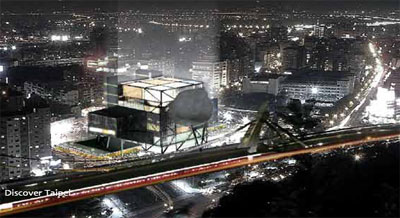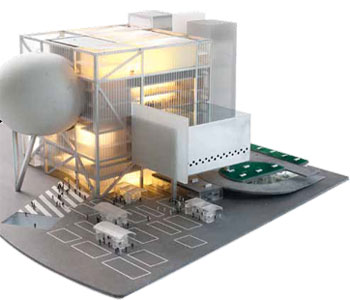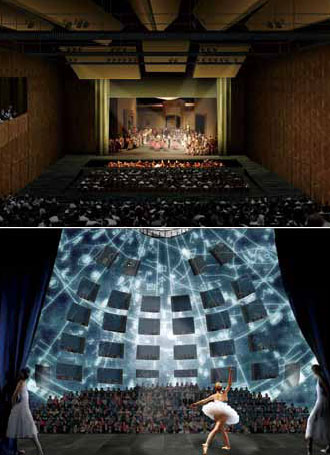Taipei Performing Arts Center
A New Local Landmark for International Arts—Taipei Performing Arts Center A total of 136 architectural outfits from 24 countries submitted competition proposals to win the right to lead the TPAC building project. On a visit to the United States in 2008, Taipei City Mayor Hau Lungbin invited Mohsen Mostafavi, dean of the Harvard Graduate School of Design, to head the TPAC selection committee, on which sat an illustrious who's who of architectural scholars, master architects,and experts from the theatrical world. From among the international competition's many brilliant designs,OMA's design emerged atop. Its design evoked the idea of a “magic cube,”with all theatrical facilities contained within the cube and the audience seating outside of it, in extensions to the four sides. There is to be one large theatre, seating 1,500,and two smaller theatres that each seat 800, one a semi-circular proscenium theatre and the other a multi-functional theat re in a square shape. Though al l three wi l l funct ion independent ly,combinations can be effected to create a“super theatre”seating 2,300 and more. The flexibility of the stage accommodations are intended to cultivate maximum creative experimentation and innovation. Another progressive design element will be to clad the cube in corrugated glass, allowing those without to see within; the intent is that those passing by will be intrigued by the action inside and will be attracted to attend the stage happenings. A public trajectory inside the cube allows those inside to see parts of the backstage areas that are hidden in the typical theatre, allowing precious glimpses into the magic of the theatrical world. Rem Koolhaas was the leader of the OMA design team. Among his many, many celebrated accomplishments have been the Netherlands Dance Theater, Kunsthal in Rotterdam, and Casa da Musica in Porto, Portugal. OMA partner David Gianotten says that a major source of the inspiration for the OMA submission was, of all things, the Taiwan night-market tempura stand. Design team members were in town searching for ideas, and marvelled how the stand could produce so many food options using such a small space. The secret was compartmentalizing the space, cutting it up for maximum efficiency. The team was seeking to create an adaptive multifunctional facility that could accommodate both traditional and modern productions as well as warehouse-style capacity to handle special works of unusual dimension.“We decided we'd try a new way of building theatre never attempted before,”he says, following the idea that the theatre experience is not just what is presented to the audience by the players on stage, but the entire production process, which should as much as possible be exposed to theatregoers.“Designing TPAC was remarkably challenging,and remarkably rewarding.” Location: Sec. 4, Chengde Rd. , between Jiantan Rd.and Wenlin Rd.; on the facility's north side is Bai Ling Senior High School, on its southeast MRT Jiantan Station. Near Taipei's MRT Jiantan Station is the famous Shilin Night Market , a must-experience site for travelers to Taipei from overseas. Soon another facility sure to become a tourist icon will open nearby— the Taipei Performing Arts Center , another sterling stage for presentation of the best in arts and culture in this city.
Near Taipei's MRT Jiantan Station is the famous Shilin Night Market , a must-experience site for travelers to Taipei from overseas. Soon another facility sure to become a tourist icon will open nearby— the Taipei Performing Arts Center , another sterling stage for presentation of the best in arts and culture in this city.Impressive Design Innovation
 Seeking to foster the development of local artistic talent, the city govt. announced its Taipei Performing Arts Center initiative in 1997. The site for the facility—one to be of novel type and function—near the MRT station and renowned night market was chosen in 2007.
Seeking to foster the development of local artistic talent, the city govt. announced its Taipei Performing Arts Center initiative in 1997. The site for the facility—one to be of novel type and function—near the MRT station and renowned night market was chosen in 2007.
Inspired by the Taiwan Night Market
Information Taipei Performing Arts Center

![Taiwan.gov.tw [ open a new window]](/images/egov.png)
